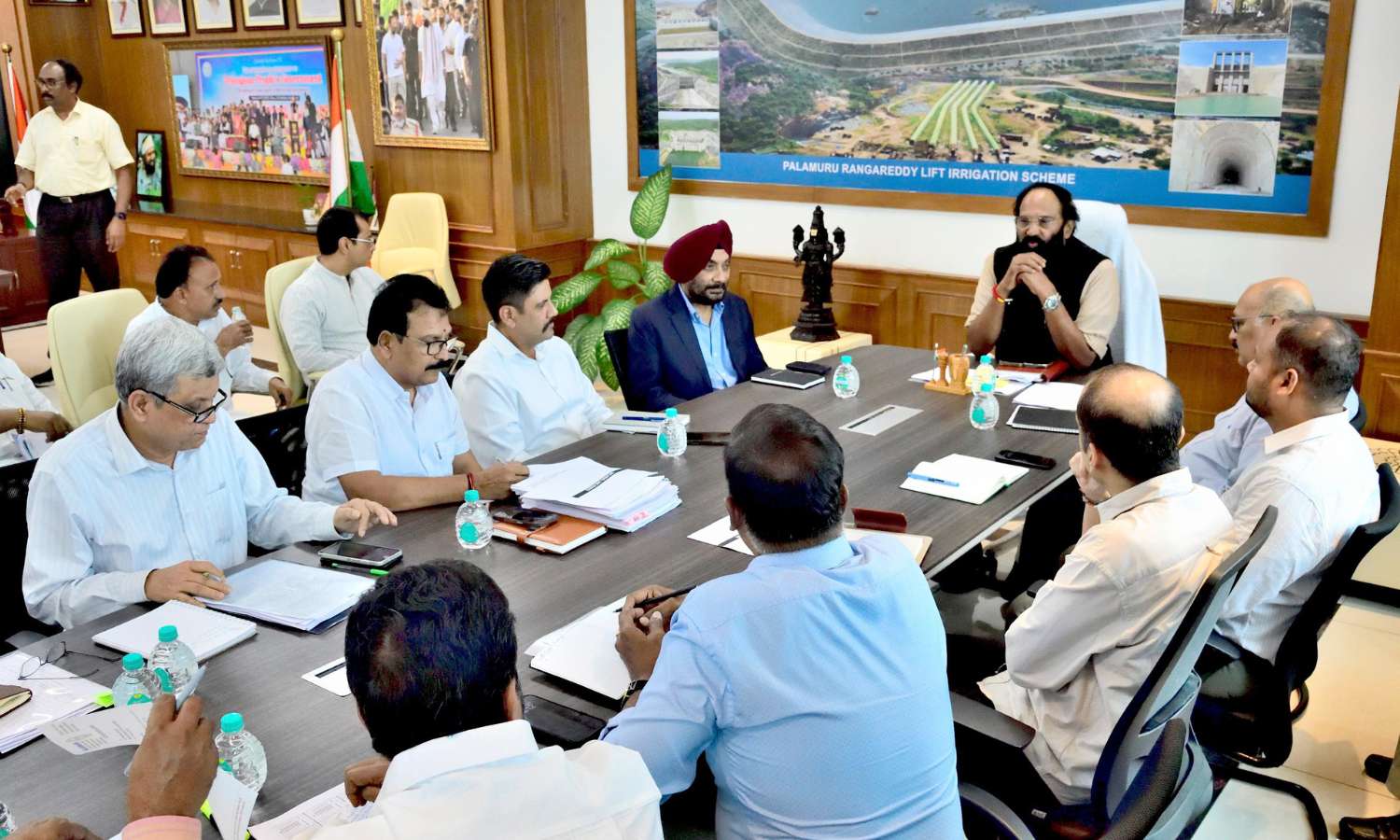Hyderabad: The Telangana government is set to resume the Srisailam Left Bank Canal (SLBC) tunnel works, with Irrigation Minister N. Uttam Kumar Reddy directing officials to follow strict safety protocols and revised timelines.
Heli-borne survey and revised execution model
At a high-level review held at the Dr. B.R. Ambedkar Telangana Secretariat, Uttam Kumar Reddy said the project must achieve a tunnelling pace of 175 metres per month. The state has set January 2028 as the target for completion.
Newly appointed Government Advisor Lt Gen Harpal Singh, former Director General of Border Roads, took charge on Wednesday and joined the meeting. Officials reviewed geological vulnerabilities, project planning, and equipment deployment strategies.
So far, workers have completed 35 km of the 44 km-long tunnel. The remaining 9 km, however, lie in geologically sensitive terrain. To manage this, the government has enlisted the National Geophysical Research Institute (NGRI) to conduct a heli-borne survey that will help identify fault lines, shear zones, and weak formations.
Uttam instructed officials to finalise the survey timeline without delay and ensure all technical parameters are clearly defined before work restarts.

“Preparedness, not crisis management,” says Uttam
Emphasising accountability, Uttam said every detail of the tunnelling process including methodology, number of passes, and monitoring systems must be documented. “We must be 99 percent sure of what we will encounter. Crisis management cannot be the approach; preparedness is the only option,” he told the department.
He warned that all work must remain within the sanctioned budget and time frame. No extensions or cost escalations would be permitted.
Three-shift operation with trained engineers
Lt Gen Harpal Singh, drawing on his experience with the Atal Tunnel, advised the use of redundant systems and robust ventilation for deep tunnelling. He also proposed the formation of a specialised team of young engineers, trained specifically for high-risk underground projects.
Excavation has progressed 21 km from one end and 14 km from the other. The remaining section will be executed in three regulated shifts, as it takes nearly 90 minutes to reach the face.
Each shift will include junior engineers responsible for daily logging and progress reports. Third-party quality checks will be implemented continuously. A performance-linked incentive model will help retain and train tunnel engineering talent within the state.
Tunnel aims to cut power costs and restrict AP’s draw
Once operational, the SLBC tunnel will deliver 0.3 TMC of water daily for 90 days, starting from the 824 ft elevation. In contrast, Andhra Pradesh currently draws water from Pothireddypadu at 840 ft.
Uttam said the SLBC tunnel would curb unauthorised draws by Andhra Pradesh, while also saving Telangana ₹500–550 crore annually in electricity used for pumping. The state currently relies on ageing motors, now nearly 20 years old, for water lifting operations.
To prevent delays or safety lapses, the government will deploy experienced tunnel and safety engineers in all three shifts. With 75% of the excavation already complete, Uttam expressed confidence that the revised schedule will be met.










